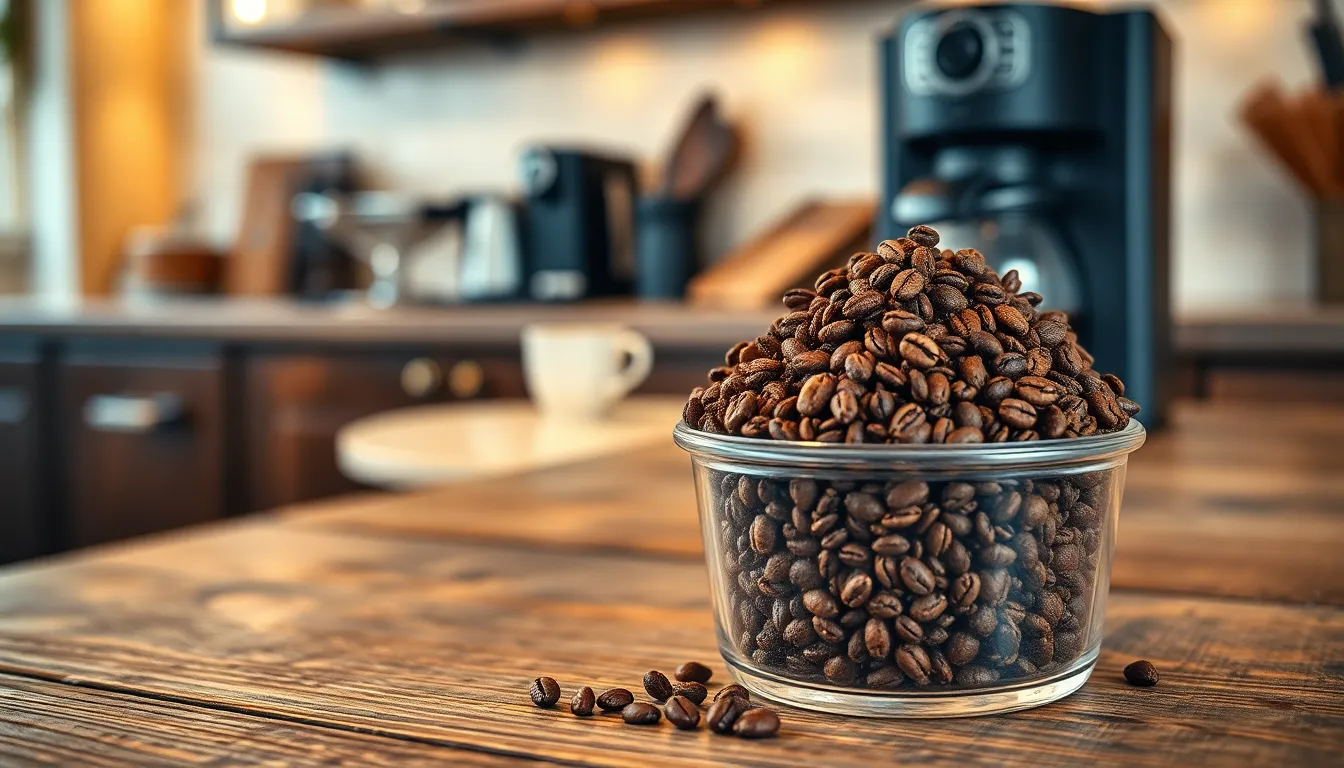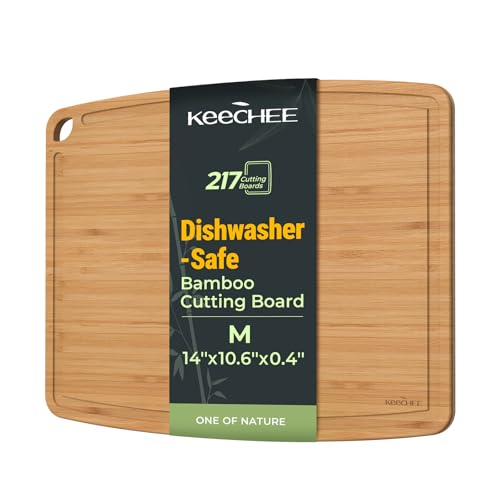Curious about freeze drying of coffee and why it’s become so popular among coffee enthusiasts? This revolutionary preservation process transforms your favorite brew into a lightweight, shelf-stable product that maintains its original flavor profile.
When you enjoy instant coffee, you’re likely experiencing the results of freeze drying. Unlike traditional drying methods, freeze drying removes moisture through sublimation—transitioning water directly from ice to vapor without becoming liquid. This gentle process preserves the coffee’s essential oils, aromas, and flavors that would otherwise be lost with conventional drying techniques. The result? A convenient coffee option that doesn’t sacrifice quality or taste.
What Is Freeze Drying of Coffee?
Freeze drying is a sophisticated preservation technique that transforms liquid coffee into a shelf-stable powder while maintaining its original flavor profile. This process has revolutionized how coffee is preserved and consumed worldwide, making it more accessible without sacrificing quality.
The Science Behind Freeze Drying
Freeze drying coffee involves a three-phase scientific process called sublimation. First, brewed coffee is rapidly frozen at temperatures below -40°F (-40°C), turning the water content into ice crystals. Next, these frozen coffee extracts enter a vacuum chamber where pressure is reduced, causing the ice to directly convert from solid to vapor without passing through a liquid state. Finally, the dehydrated coffee particles undergo a secondary drying phase to remove any remaining moisture molecules. This precise method preserves the coffee’s cellular structure, essential oils, and volatile compounds responsible for aroma and flavor. Research from the Journal of Food Science indicates that freeze-dried coffee retains up to 97% of its original aromatic compounds compared to only 50-70% in spray-dried alternatives.
How Freeze Drying Differs From Other Preservation Methods
Freeze drying stands apart from conventional coffee preservation techniques in several important ways. Traditional spray drying exposes coffee to high temperatures (up to 480°F/250°C), destroying many flavor compounds and creating a bitter taste profile. Heat-based dehydration methods often result in oxidation and caramelization that fundamentally alter the coffee’s character. Freeze drying, conversely, operates at low temperatures that protect delicate flavor components. The absence of heat prevents thermal degradation of chlorogenic acids and other antioxidants naturally present in coffee. Examining particle structure under microscopes reveals that freeze-dried coffee maintains a porous, honeycomb-like formation that dissolves quickly when rehydrated, unlike the dense particles produced by spray drying. This structural difference explains why freeze-dried coffee reconstitutes more completely, delivering a cup that’s remarkably similar to freshly brewed coffee.
The History of Freeze-Dried Coffee
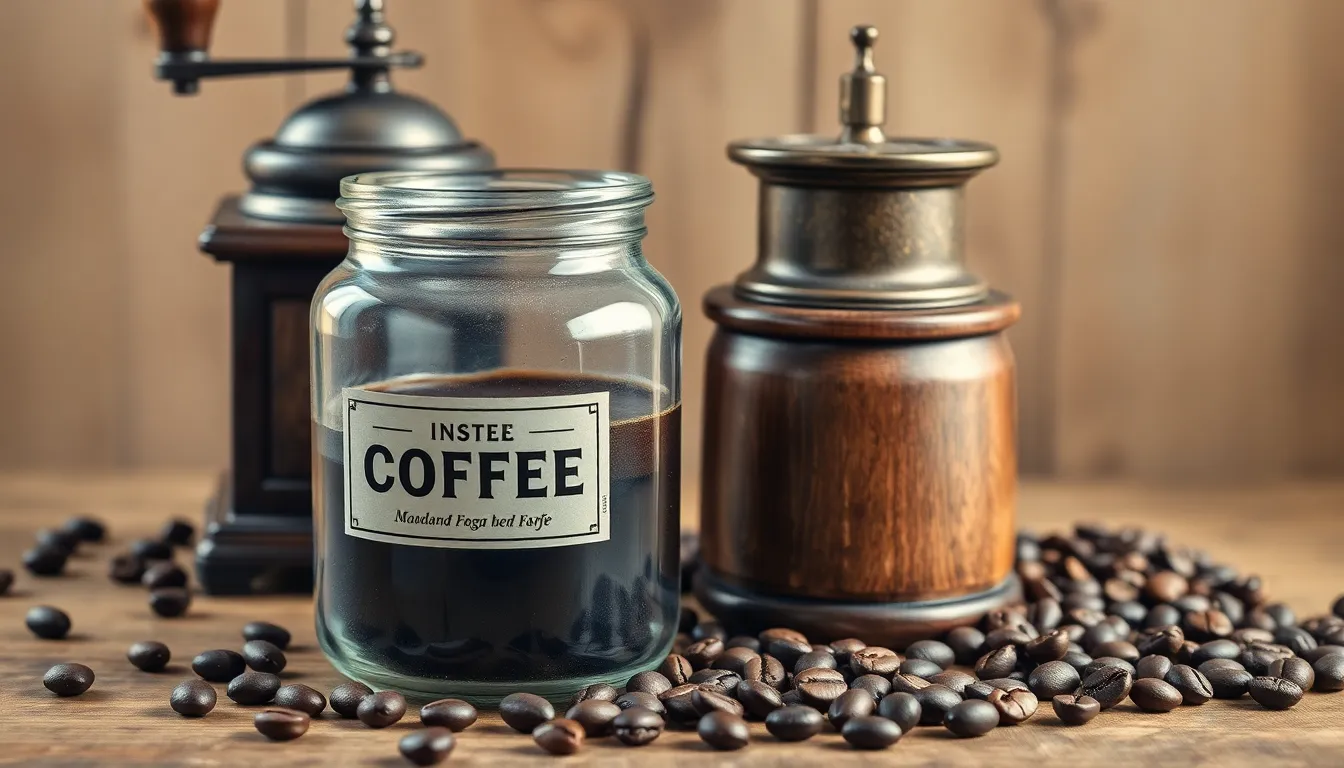
Freeze-dried coffee represents one of the most important innovations in coffee preservation technology. Its journey from initial concept to commercial success spans several centuries and showcases remarkable advancements in food science.
Origins and Development
Instant coffee’s roots trace back to 1771 in the United Kingdom when the British government patented the first “coffee compound.” This early innovation laid the groundwork for future developments in coffee preservation. Throughout the 19th century, inventors continued refining the concept, with notable contributions from David Strang of New Zealand, who filed a patent in 1889. The early 1900s saw George Constant Louis Washington introduce commercial instant coffee products to the market.
Military necessity significantly accelerated instant coffee’s popularity. During Industry Wars I and II, instant coffee became an essential component of military rations due to its portability, long shelf life, and ease of preparation in battlefield conditions. This practical application demonstrated the value of instant coffee beyond civilian convenience.
Nestlé’s introduction of the Nescafé brand in 1938 marked a turning point, transforming instant coffee from a niche product into a global household staple. This widespread commercial success created the foundation for future technological improvements in coffee preservation methods.
Commercial Expansion
The 1960s revolutionized the instant coffee industry with the introduction of freeze-drying technology. This breakthrough process represented a quantum leap in quality preservation compared to earlier spray-drying methods. Freeze-drying involves freezing brewed coffee and then sublimating the ice directly into vapor under reduced pressure, bypassing the liquid phase entirely.
Nescafé pioneered commercial freeze-dried coffee production, setting new standards for flavor retention in instant coffee. The superior taste profile of freeze-dried products quickly gained consumer preference, particularly in European markets where coffee quality expectations were traditionally high.
Brazil and Colombia emerged as major producers in the freeze-dried coffee industry, leveraging their established coffee growing expertise to dominate this high-value segment. The market expansion proved remarkable, with freeze-dried products rapidly displacing conventional spray-dried instant coffee across many markets.
The technological advantages of freeze-drying created products that retained significantly more of coffee’s original aromatic compounds and flavor complexity. This preservation breakthrough transformed consumer perceptions of instant coffee from a mere convenience to a genuinely satisfying alternative to freshly brewed coffee.
The Freeze Drying Process in Coffee Production
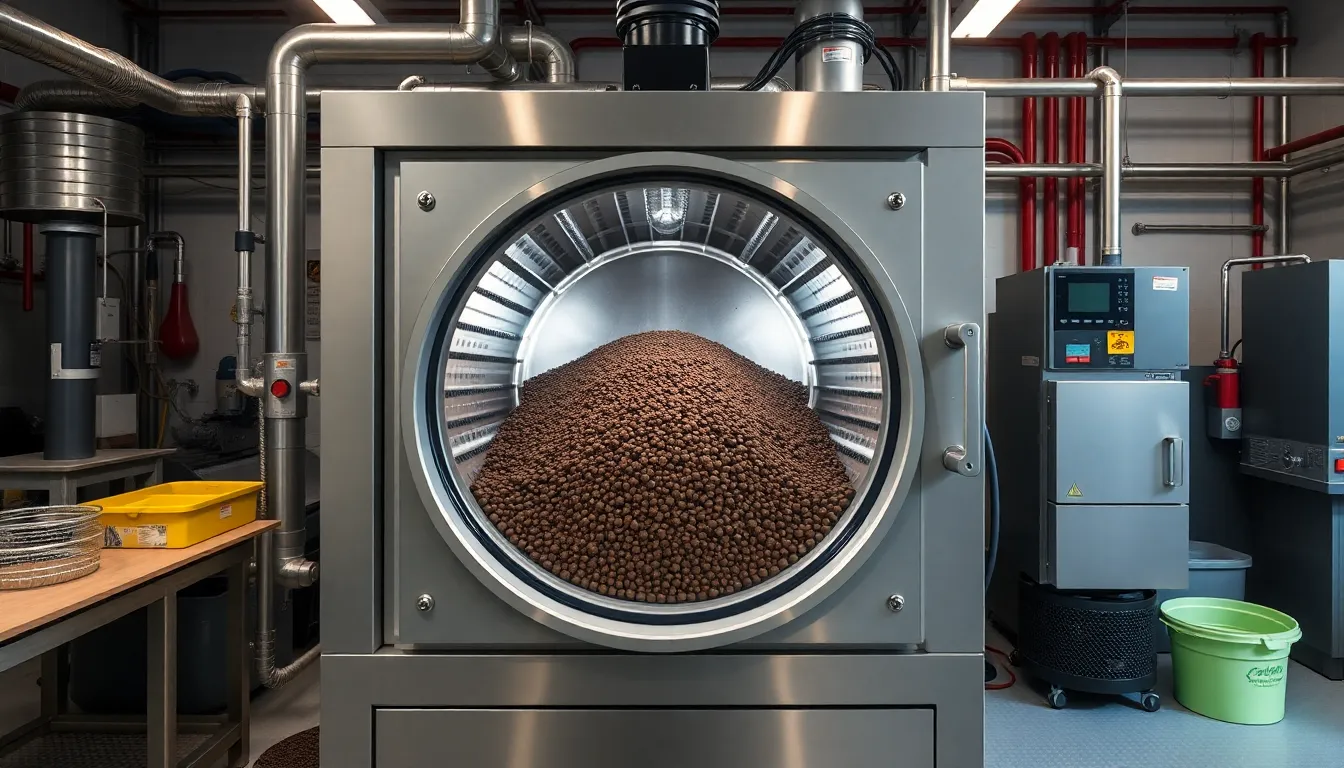
Freeze drying transforms ordinary coffee into premium instant coffee through a sophisticated preservation method that maintains flavor integrity. This multi-stage process combines precise temperature control with vacuum technology to remove moisture while protecting the coffee’s essential characteristics.
Pre-Freezing and Preparation
The journey begins with freshly roasted coffee beans that undergo extraction using high pressure and water to create a concentrated coffee extract. This rich concentrate is rapidly frozen at approximately –40°C (–40°F), preventing large ice crystal formation which could damage the cellular structure and compromise flavor compounds. Rapid freezing is crucial as it preserves the delicate aromatic profiles that give coffee its distinctive character. The frozen coffee blocks are then precisely cut into granules of uniform size, optimizing them for the subsequent drying phases and ensuring consistent quality throughout the batch.
Primary and Secondary Drying Phases
During the primary drying phase, the frozen coffee granules enter a vacuum chamber where pressure drops significantly below atmospheric levels. This low-pressure environment enables sublimation—a process where ice transitions directly from solid to vapor without passing through a liquid state. Sublimation gently removes approximately 95% of the moisture content without exposing the coffee to damaging heat, preserving its complex flavor compounds and aromatic oils. Temperature gradually increases during this phase to help efficient ice removal while maintaining structural integrity.
The secondary drying phase follows once most ice has sublimated, focusing on removing any remaining bound water molecules from the coffee structure. Temperatures rise slightly higher than in the primary phase, bringing moisture content down to between 1% and 4%. This extremely low moisture level creates a microbiologically stable product resistant to spoilage and oxidation. Both drying phases occur under carefully monitored conditions to prevent overheating or uneven drying that could compromise the coffee’s sensory qualities.
Post-Processing Steps
After completing the drying cycles, the coffee granules undergo quality testing to verify moisture content, particle size, and solubility parameters. The finished product features a porous structure that enables rapid rehydration when hot water is added. Packaging happens immediately in airtight containers, often with nitrogen flushing to displace oxygen and further protect against degradation. Compared to spray-dried instant coffee, which loses important flavor compounds due to high-temperature exposure, freeze-dried coffee retains up to 97% of its original aromatic profile. This superior preservation method explains why freeze-dried coffee commands premium pricing in the market, offering convenience without compromising on the rich sensory experience coffee enthusiasts expect.
Impact of Freeze Drying on Coffee Quality
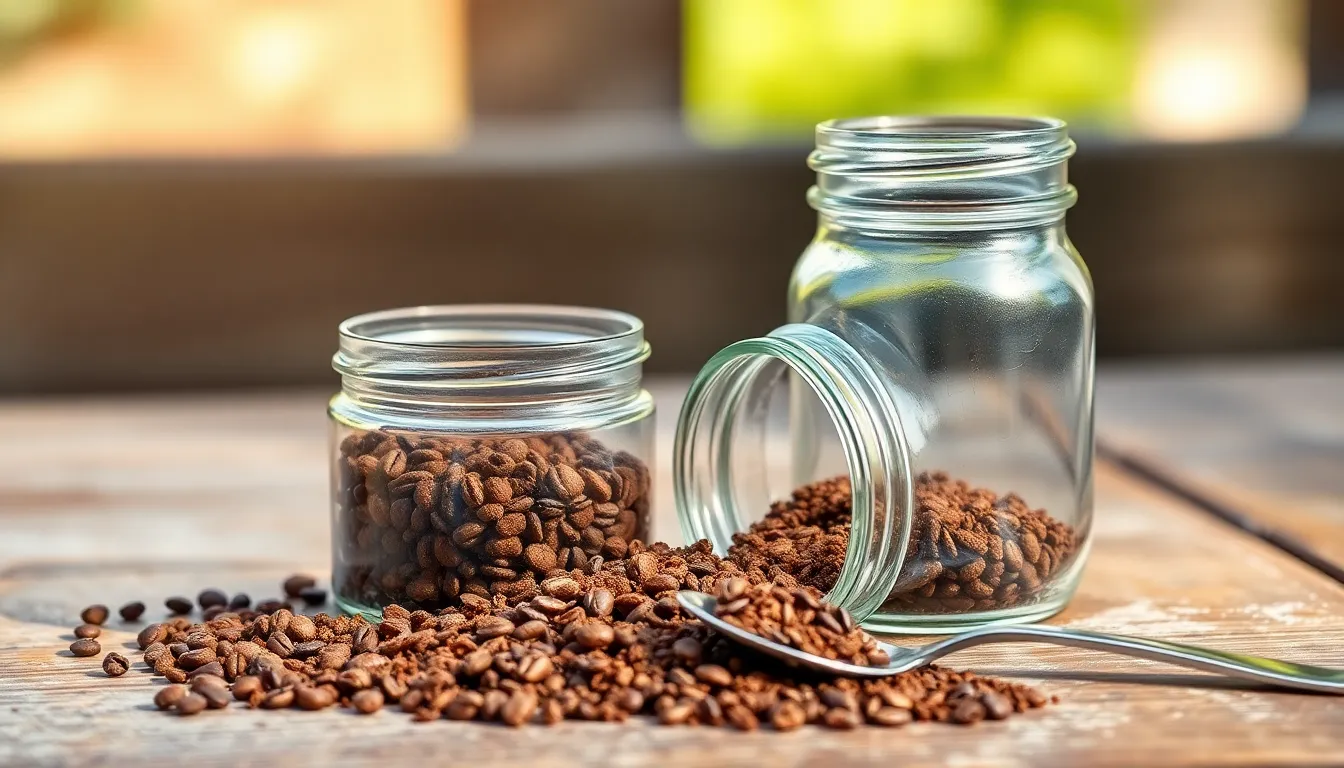
Freeze drying represents a superior processing method for coffee that preserves its intrinsic qualities through careful moisture removal at low temperatures. This sophisticated preservation technique employs sublimation to maintain the original bean structure and compounds more effectively than conventional drying approaches.
Flavor Retention Benefits
Freeze drying preserves coffee’s complex flavor profile by avoiding the high temperatures that typically degrade delicate compounds. Unlike spray drying methods that expose coffee to excessive heat, freeze drying maintains the integrity of aromatic compounds, sugars, and acids that contribute to coffee’s distinctive taste. This careful preservation results in a smoother cup with reduced astringency and minimized bitterness. You’ll notice the fullness and complexity of flavors in freeze-dried coffee that closely resembles freshly brewed coffee from quality beans.
Aroma Preservation
Essential oils and volatile compounds responsible for coffee’s enticing aroma remain intact during the freeze drying process. The controlled low-temperature conditions prevent these aroma molecules from escaping, creating instant coffee that smells remarkably fresh and inviting. When you open a container of freeze-dried coffee, the aromatic experience rivals that of freshly ground beans—a important advantage over other instant coffee varieties that often lack this sensory dimension.
Shelf Life Advantages
Freeze-dried coffee enjoys exceptional longevity thanks to the effective removal of moisture that inhibits both microbial growth and chemical degradation. This preservation method extends shelf life considerably compared to other instant coffee forms, with properly stored products maintaining quality for several years. Store your freeze-dried coffee in airtight containers away from heat, light, and moisture to maximize its extended shelf life without compromising flavor or aroma integrity.
The process also delivers additional benefits beyond the primary advantages. Freeze-dried coffee retains more antioxidants and caffeine, preserving coffee’s natural health benefits such as reduced risk of heart disease and diabetes. Its quick dissolution in hot water provides convenient preparation without specialized equipment. The preservation of bean structure enables more uniform grinding and extraction, delivering consistent flavor quality in each cup you prepare.
Environmental and Economic Considerations
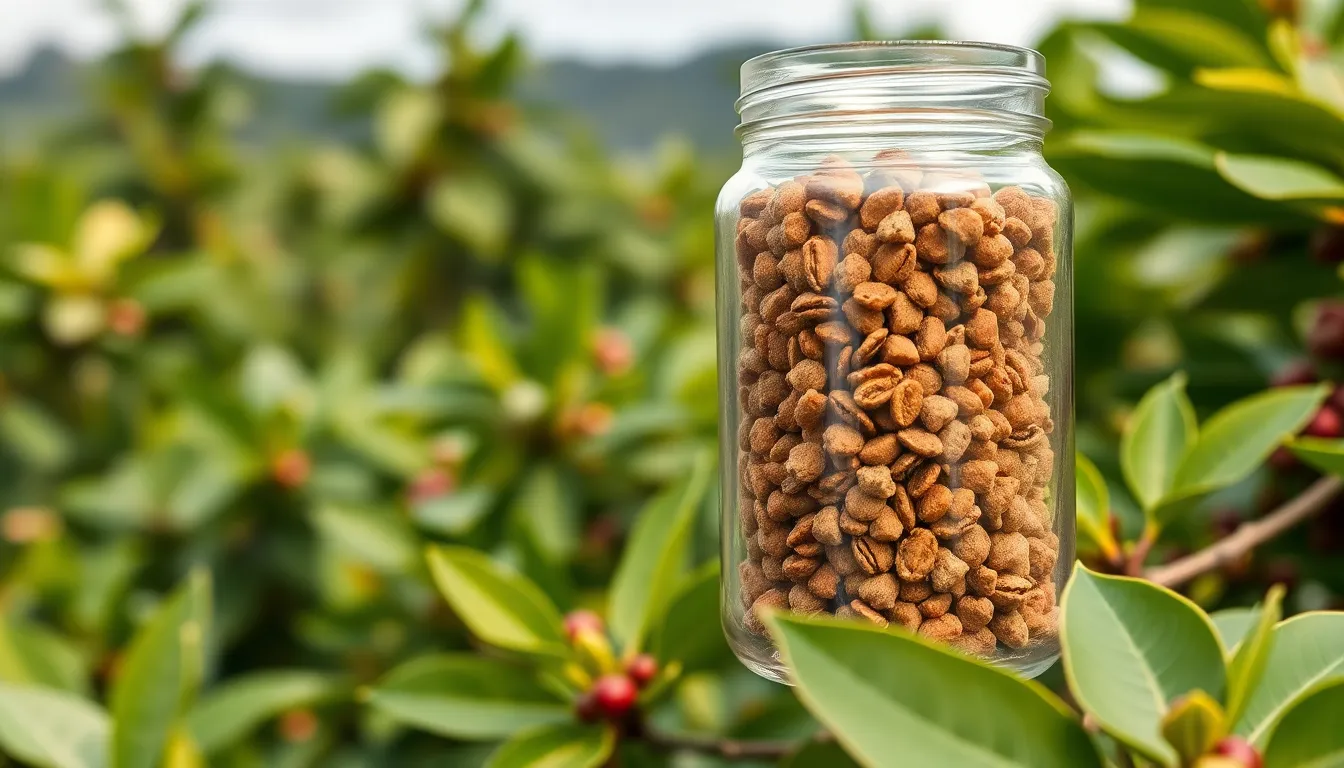
Freeze drying coffee presents a complex balance of environmental impacts and economic factors that affect both producers and consumers. These considerations play a crucial role in the industry’s sustainability and the product’s market positioning.
Energy Consumption
Freeze drying requires substantial energy to maintain freezing temperatures and vacuum conditions during the sublimation process. The high energy demand contributes significantly to greenhouse gas emissions when traditional power sources are used. Industry manufacturers are actively developing more efficient freeze drying technologies to reduce this environmental footprint. Energy optimization efforts include improved insulation in vacuum chambers, heat recovery systems, and transitioning to renewable energy sources for powering production facilities.
Production Costs vs. Benefits
Freeze-dried coffee production costs exceed those of other instant coffee methods by 30-40%. This price difference stems from specialized equipment investments, extended processing times, and continuous energy usage during the freeze and dry phases. Even though these higher costs, manufacturers find justification in several key benefits:
| Benefit | Impact |
|---|---|
| Flavor Quality | Maintains 97% of original flavor compounds |
| Shelf Stability | 2-3 years when properly stored |
| Premium Pricing | Commands 25-50% higher retail prices |
| Reduced Waste | Lower spoilage rates than traditional coffee |
The superior quality allows producers to target premium market segments where consumers value authentic coffee experiences without brewing equipment. Freeze-dried coffee avoids the burnt or bitter notes common in spray-dried alternatives, creating products that appeal to discerning coffee drinkers. This quality distinction enables brands to establish stronger market positions and build loyal customer bases willing to pay premium prices for convenience without flavor compromise.
Popular Freeze-Dried Coffee Brands
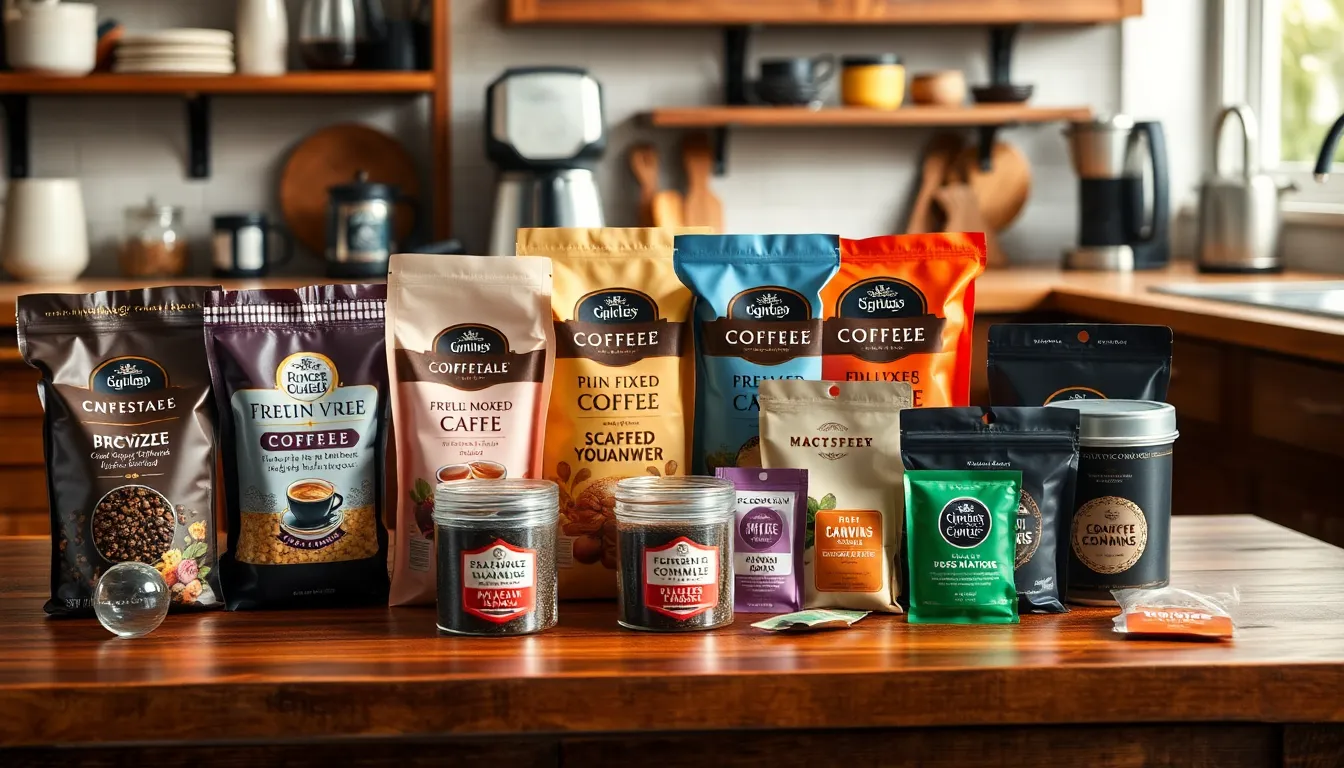
Freeze-dried coffee brands occupy different market segments, catering to diverse consumer preferences and budgets. These products use the advanced preservation technique of freeze drying to deliver convenient coffee options while maintaining varying degrees of quality and flavor authenticity.
Premium Options
Premium freeze-dried coffee brands emphasize exceptional flavor preservation and superior bean quality in their products. Specialty coffee companies leverage freeze drying technology to offer single-origin coffees and carefully crafted blends that retain the complex flavor profiles of high-grade beans. These manufacturers often source from renowned coffee-growing regions and use meticulous processing techniques to ensure maximum aroma retention. The resulting products deliver a cup that closely resembles freshly brewed coffee, with nuanced flavor notes and balanced acidity that satisfy even discerning coffee enthusiasts. Premium options typically come in elegant packaging that protects the product from moisture and light, extending shelf life while signaling their upscale positioning in the market.
Budget-Friendly Choices
Mass-market brands provide accessible freeze-dried coffee options that balance quality with affordability. These widely available products offer decent flavor profiles at competitive price points, making them popular choices for everyday consumption. Supermarket shelves stock many budget-friendly freeze-dried coffees that dissolve quickly in hot water and deliver consistent results. Many manufacturers in this segment have improved their freeze-drying processes to enhance flavor retention while maintaining cost efficiency. The convenience factor remains a key selling point for these options, as they require no specialized equipment and produce minimal waste. Budget-friendly freeze-dried coffees often come in various sizes and formats, from single-serve packets to large jars, accommodating different household needs and consumption patterns.
Conclusion
Freeze drying has revolutionized coffee preservation by creating a product that’s convenient without sacrificing the complex flavors coffee lovers crave. The meticulous process that transforms liquid coffee into shelf-stable crystals represents the perfect marriage of science and culinary art.
As you discover the area of freeze-dried coffee you’ll find options ranging from premium single-origin varieties to accessible everyday brands. Each offers distinct advantages over traditional instant coffee thanks to the careful preservation of aromatic compounds.
The evolution of freeze-drying technology continues to improve energy efficiency while maintaining the exceptional quality that’s made it the gold standard for instant coffee production. Whether you’re an on-the-go coffee enthusiast or simply appreciate convenience paired with authentic flavor freeze-dried coffee delivers an experience remarkably close to freshly brewed.
Frequently Asked Questions
What is freeze-dried coffee?
Freeze-dried coffee is a type of instant coffee created through a sophisticated preservation process that removes moisture via sublimation. This method preserves up to 97% of coffee’s original aromatic compounds, resulting in a lightweight, shelf-stable product that maintains most of the flavor profile of freshly brewed coffee. Unlike traditional drying methods, freeze drying operates at low temperatures, protecting the coffee’s essential oils, aromas, and flavors.
How is coffee freeze-dried?
Coffee freeze-drying involves multiple stages: First, coffee extract is created from freshly roasted beans, then rapidly frozen to preserve aromas. Next, primary drying occurs in a vacuum chamber where ice sublimates directly to vapor, removing about 95% of moisture. A secondary drying phase eliminates remaining bound water. Finally, the product undergoes quality testing before being packaged in airtight containers to prevent degradation.
When was freeze-dried coffee invented?
While coffee preservation efforts date back to 1771 with the first “coffee compound” patent in the UK, freeze-drying technology for coffee specifically emerged in the 1960s. This innovation revolutionized the instant coffee industry by dramatically improving flavor retention. Nestlé’s Nescafé brand pioneered commercial freeze-dried coffee production, setting new quality standards and expanding the market, particularly throughout Europe.
How does freeze-dried coffee compare to spray-dried coffee?
Freeze-dried coffee retains up to 97% of original aromatic compounds, while spray-dried alternatives preserve only 50-70%. Traditional spray drying uses high temperatures that destroy flavor compounds and alter coffee’s character. Freeze drying operates at low temperatures, preserving delicate flavors and maintaining a porous structure that allows quick rehydration. This results in a cup that more closely resembles freshly brewed coffee with better aroma and less bitterness.
How long does freeze-dried coffee last?
Properly stored freeze-dried coffee can maintain its quality for several years due to its extremely low moisture content. The freeze-drying process effectively removes water that would otherwise contribute to degradation, creating a microbiologically stable product. For best results, store in airtight containers away from moisture, heat, and direct light. The exceptional shelf life makes it ideal for emergency supplies, travel, and convenience.
Is freeze-dried coffee more expensive than regular instant coffee?
Yes, freeze-dried coffee typically commands premium pricing compared to other instant coffees due to higher production costs. The sophisticated multi-stage freeze-drying process requires specialized equipment and more energy than conventional methods. However, the superior flavor quality, exceptional shelf stability, and reduced waste justify the higher price for many consumers. Premium brands sourcing from renowned coffee regions command even higher prices.
Does freeze-dried coffee retain caffeine and antioxidants?
Yes, the freeze-drying process preserves most of coffee’s natural caffeine content and antioxidants. Unlike high-temperature drying methods that can degrade these compounds, freeze drying’s low-temperature approach maintains coffee’s beneficial properties. Research shows freeze-dried coffee retains significantly more bioactive compounds than other instant coffee types, allowing consumers to enjoy both the convenience and the health benefits associated with regular coffee consumption.
What are the environmental impacts of freeze-dried coffee production?
Freeze-drying coffee requires substantial energy, contributing to greenhouse gas emissions. The process involves energy-intensive freezing and vacuum systems that operate for extended periods. However, manufacturers are developing more efficient technologies to reduce this environmental footprint. On the positive side, freeze-dried coffee’s exceptional shelf life and lightweight nature reduce food waste and transportation emissions, potentially offsetting some production impacts.

